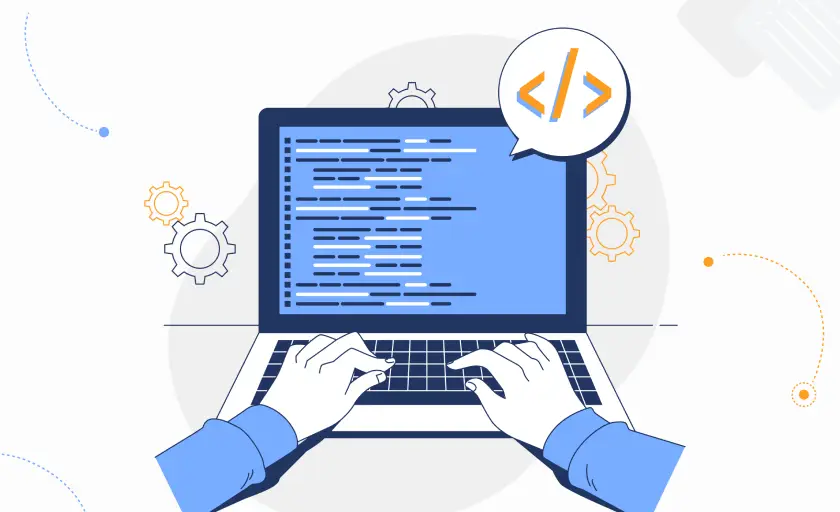In today’s technology-driven world, cybersecurity is more important than ever. Protecting your digital assets—from personal data to critical systems—is essential to staying safe online.
Cybersecurity Fundamentals Verso: Essential Guide to Safety introduces the foundational concepts everyone should understand to defend against digital threats. While learning about cybersecurity may seem overwhelming at first, gaining a solid grasp of the basics is crucial for anyone who uses digital tools daily.
This guide breaks down the core principles of cybersecurity in a clear and beginner-friendly way. Whether you’re a student, working professional, or simply curious about online safety, this essential guide will help you build the knowledge and confidence to secure your devices and information.
Get ready to explore the fundamentals of cybersecurity and take the first step toward protecting your digital life. Let’s begin your journey into the Cybersecurity Fundamentals Verso.
Introduction To Cybersecurity
Cybersecurity protects computers, networks, and data from unauthorized access. It’s essential for keeping our digital world safe. Many aspects of our lives depend on technology. So, cybersecurity affects everyone. From individuals to big businesses, everyone needs protection.
Understanding cybersecurity basics is crucial. This knowledge helps us defend against cyber threats. Cybersecurity also ensures privacy and data integrity. Let’s explore its importance and challenges.
Importance Of Cybersecurity
Cybersecurity protects sensitive information. This includes personal data, financial records, and business secrets. Without it, hackers can steal or misuse this data. Cyberattacks can cause financial losses. They can also damage reputations.
Security measures build trust. Customers feel safe sharing their information. Businesses can operate smoothly. Cybersecurity also helps comply with regulations. Many laws require data protection. So, it’s vital for legal reasons too.
Cybersecurity Challenges
Cybersecurity faces many challenges. One major issue is evolving threats. Hackers create new attacks constantly. This makes defense difficult. Another challenge is human error. People often make mistakes. These can lead to data breaches.
Limited resources pose another problem. Many organizations lack funds for robust security. They may also lack skilled personnel. This leaves them vulnerable to attacks. Staying updated with technology is crucial. Cybersecurity tools evolve rapidly. Organizations must keep pace to protect their assets.

Credit: motictech.com
Common Cyber Threats
Cybersecurity is vital in today’s digital world. Threats are evolving, targeting individuals and businesses alike. Understanding common cyber threats helps safeguard data and privacy. This section delves into two prevalent threats: Malware and Phishing Attacks.
Malware
Malware is malicious software designed to harm. It includes viruses, worms, and ransomware. Malware can steal sensitive information. It often spreads through email attachments and downloads. Regular software updates can help protect against it. Using reliable antivirus software is also crucial. Be cautious with unfamiliar links and files.
Phishing Attacks
Phishing attacks trick users into revealing personal data. Cybercriminals often use fake emails and websites. These mimic legitimate organizations. Users might unknowingly share passwords or credit card details. Always verify the sender’s email address. Look for signs of authenticity in emails. Never click on suspicious links. Educating oneself about phishing signs is key to prevention.
Basic Security Measures
Understanding the basics of Cybersecurity Fundamentals Verso is crucial in today’s digital world. Implementing basic security measures can protect your data and privacy. These measures are simple yet effective. They can safeguard you from many cyber threats.
Strong Passwords
Strong passwords are the first line of defense against cyberattacks. Create passwords with at least 12 characters. Use a mix of letters, numbers, and symbols. Avoid using easy-to-guess information like birthdays. Change your passwords regularly. Avoid using the same password across multiple sites. This practice reduces the risk of multiple accounts being compromised.
Two-factor Authentication
Two-Factor Authentication (2FA) adds an extra layer of security. It requires two types of identification. Typically, these are your password and a code sent to your phone. Even if someone gets your password, they still need the second factor. This makes unauthorized access much harder. Enable 2FA on all accounts that offer it. This small step can make a big difference in your security.
Network Security
Network security is crucial in protecting digital assets. It involves strategies to safeguard data from unauthorized access. Effective network security keeps sensitive information safe. It also ensures business operations run smoothly.
Firewalls
Firewalls act as barriers between trusted and untrusted networks. They monitor incoming and outgoing traffic. This helps block harmful data and unauthorized access. Firewalls use rules to decide which traffic is allowed. They are essential for preventing cyberattacks.
Encryption
Encryption transforms data into unreadable code. Only authorized users can decode it. This protects data from hackers. Encryption is vital for securing sensitive information. It is widely used in online transactions. It ensures privacy and data integrity.
Data Protection
Data protection is the backbone of Cybersecurity Fundamentals Verso. It’s not just about keeping hackers at bay; it’s about ensuring the integrity and confidentiality of your data. Imagine waking up one day to find all your vital information gone or compromised. That’s why understanding and implementing strong data protection strategies is crucial. Let’s dive into the essentials of safeguarding your data, focusing on backup and privacy.
Data Backup
Backing up your data is like having a safety net. It’s about preparing for the unexpected. Accidental deletions, hardware failures, or cyber-attacks can result in data loss. Regular backups ensure you have a copy to restore when things go south.
How frequently should you back up your data? Consider the importance of the information. Daily backups might be necessary for crucial business data. For personal files, weekly or monthly might suffice.
Use multiple backup methods. External hard drives, cloud storage, or even network-attached storage are great options. Each has its strengths; choose what fits your needs.
Have you ever lost important files because you didn’t back them up? It’s a frustrating lesson. Implementing a backup routine can save you from future heartaches.
Data Privacy
Data privacy is about controlling who can access your information. It’s not just for businesses; it’s essential for everyone. Personal data like photos, emails, and banking information need protection from prying eyes.
Start by understanding your privacy settings. Whether it’s social media accounts or mobile apps, review what information you’re sharing. Adjust settings to limit exposure.
Consider encryption for sensitive data. It’s like putting your information in a safe. Even if someone accesses it, they can’t understand it without the key.
Are you aware of how much of your personal information is publicly accessible? Take a moment to check. You might be surprised at what you find.
By focusing on data protection, you are taking control of your digital presence. It’s not just about avoiding threats but empowering yourself to safeguard your valuable information. What steps will you take today to protect your data?

Credit: motictech.com
Safe Online Practices
Safe online practices are essential in today’s digital age. They protect personal information and prevent cyber threats. Knowing the basics can help users browse securely. Let’s explore some key practices for a safer online experience.
Secure Browsing
Choose a trusted web browser for your daily use. Keep it updated regularly for the best protection. Enable pop-up blockers to avoid unwanted ads. Use a search engine that prioritizes your privacy. Regularly clear your browser history and cache. This removes stored data that might be sensitive. Always use secure connections. Look for “https” in the URL, not just “http”. This ensures data is encrypted between your device and the server.
Avoiding Suspicious Links
Be cautious of emails from unknown senders. They might contain harmful links. Hover over links before clicking to see the actual URL. Look for signs of phishing attempts. Check for misspellings or unusual language in emails. Avoid downloading attachments from suspicious sources. They might contain malware. Use a reliable antivirus program. It can scan links and attachments for threats. Educate yourself on common online scams. This knowledge helps in identifying red flags.
Mobile Device Security
Mobile devices are now essential in our daily lives. They store personal and sensitive information. Protecting this information is crucial. Cyber threats target these devices more than ever. Understanding mobile device security is key. It helps keep your data safe and secure.
App Permissions
Apps often request access to your data. They may ask for location, contacts, or photos. Always review these permissions carefully. Does the app need this access? If not, deny the permission. This helps protect your personal information. Check app permissions regularly. Make changes as needed to ensure security.
Regular Updates
Software updates are vital for security. They fix known vulnerabilities in your device. Always install updates promptly. Enable automatic updates for ease. This ensures your device stays protected. Regular updates can prevent potential cyberattacks. Keeping your device up-to-date is a simple security measure.

Credit: westportlibrary.org
Responding To Cyber Incidents
Swift response to cyber incidents is crucial for protecting data. Learn the basics of cybersecurity to stay secure.
Responding to cyber incidents is a critical aspect of Cybersecurity Fundamentals Verso that often determines the extent of damage and recovery time. Imagine waking up one morning to find your business’s systems compromised, customer data at risk, and operations at a standstill. What would you do first? This is where a well-structured incident response plan becomes invaluable. You need to be prepared, so when the unexpected strikes, you can act swiftly and effectively.
Incident Response Plan
An incident response plan is your roadmap during a cyber crisis. It outlines the steps to take when your digital fortress is breached. First, identify the nature and scope of the incident. Is it a malware attack or a data breach? Knowing this helps tailor your response. Next, contain the threat. Disconnect affected devices from the network to prevent further damage.
Regularly update your plan to address new threats. Cybercriminals evolve, and so should your defenses. Imagine it as a living document, not a static one. Include contact information for key personnel and external experts. Who will you call when the alarms go off? Ensure that everyone on your team knows their role in the plan. A quick response can mitigate damage significantly.
Reporting Cybercrimes
Reporting cybercrimes is not just a legal obligation; it’s a crucial step in safeguarding your digital landscape. Promptly report incidents to relevant authorities. It helps track and combat cyber threats on a larger scale. When you report, provide detailed information about the incident. What time did it occur? What systems were affected? This data aids in the investigation.
Consider informing your clients if their data might be compromised. Transparency builds trust. Would you want to know if your personal information was at risk? Effective communication reassures stakeholders and keeps them informed. Keep records of all communications and actions taken. Documentation is vital for future reference and learning from each incident.
Responding proactively to cyber incidents requires more than just a plan and reporting. It demands vigilance and adaptability. Your preparedness can make all the difference. Are you ready to face the unexpected?
Future Of Cybersecurity
The future of Cybersecurity Fundamentals Verso holds both promise and challenge. As technology evolves, so do the methods of cyber threats. Understanding the fundamentals is crucial. This helps protect sensitive information in a digital world. Businesses and individuals must stay informed about these changes.
Emerging Technologies
New technologies emerge every day. Artificial Intelligence and Machine Learning are at the forefront. They offer advanced ways to detect and respond to threats. AI helps analyze data quickly, identifying patterns and anomalies. Machine Learning improves security systems over time. These technologies enhance protection but need careful management.
Evolving Threat Landscape
Cyber threats grow more sophisticated. Hackers use advanced techniques. Phishing, ransomware, and malware attacks are common. These threats adapt rapidly. Staying ahead is vital. Continuous learning and updating security measures are necessary. This proactive approach helps defend against evolving risks.
Frequently Asked Questions
What Are The Basic Fundamentals Of Cyber Security?
Cybersecurity fundamentals include protecting networks, devices, and data from unauthorized access. Regularly update software, use strong passwords, and enable firewalls. Educate users on security practices and monitor systems for threats. Implement encryption for sensitive information and conduct regular security audits to ensure robust protection.
Is Cybersecurity Fundamentals Hard?
Cybersecurity fundamentals can be challenging but manageable with dedication. Basic knowledge of IT and security concepts helps. Hands-on practice and continuous learning are crucial. Courses and resources are available to simplify learning. Starting with foundational topics makes it more approachable.
Consistent effort and curiosity lead to success in mastering cybersecurity basics.
What Are The 5 C’s Of Cyber Security?
The 5 C’s of cyber security are Change, Compliance, Cost, Continuity, and Coverage. These elements ensure robust protection against cyber threats.
What Are The 7 Layers Of Cyber Security?
The 7 layers of cyber security are: 1) Human Layer, 2) Perimeter Security, 3) Network Security, 4) Endpoint Security, 5) Application Security, 6) Data Security, 7) Policies and Procedures. These layers ensure comprehensive protection against cyber threats.
Conclusion
Understanding Cybersecurity Fundamentals Verso is crucial in today’s digital world. Protect personal data. Safeguard online activities. These fundamental principles keep you secure. Stay informed about threats. Regular updates are key. Practice safe browsing habits. Use strong passwords. Keep software updated. Remember, awareness is your first defense.
Cyber threats evolve. Your knowledge should too. Staying vigilant is essential for online safety. Embrace learning. Enhance your cybersecurity skills. Protect your digital life. Make security a priority. Everyone can contribute to a safer online environment. Cybersecurity is everyone’s responsibility.
Stay safe. Stay secure. Keep learning.






